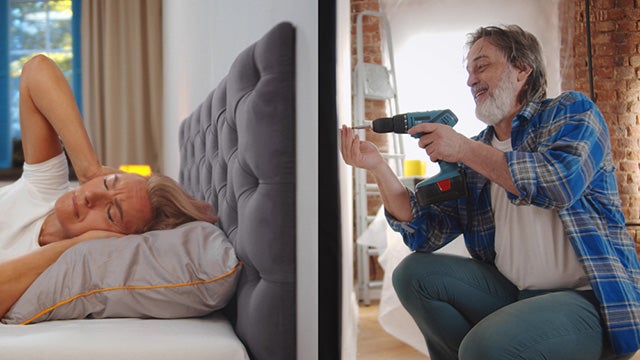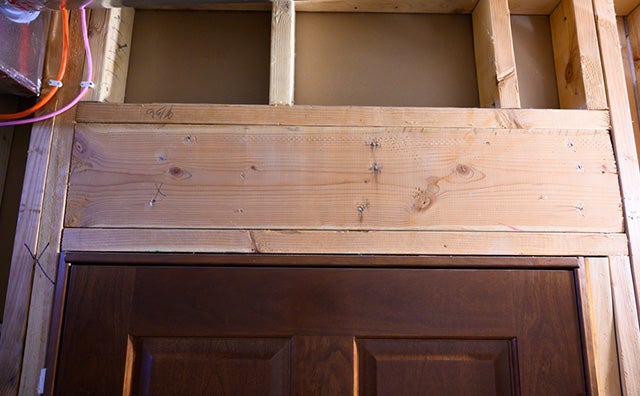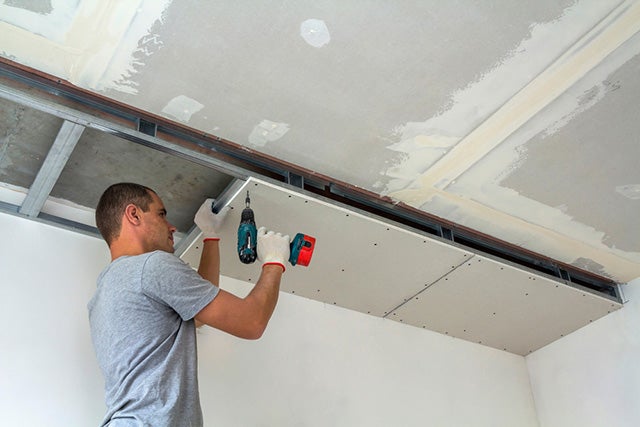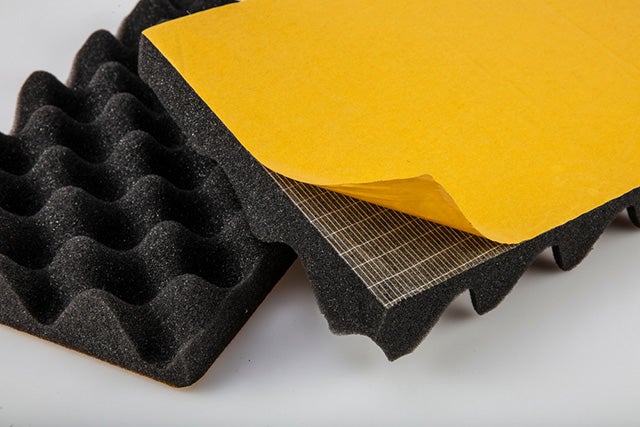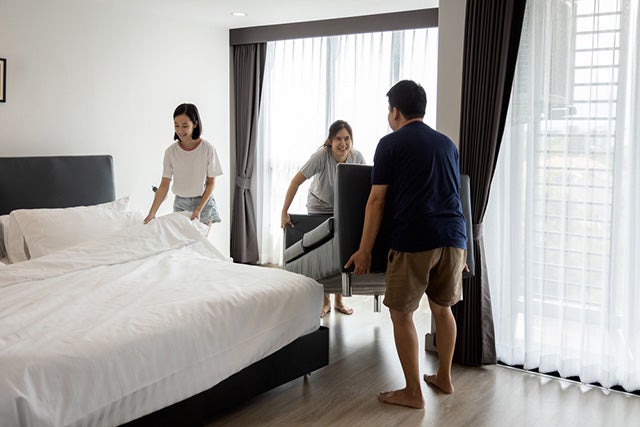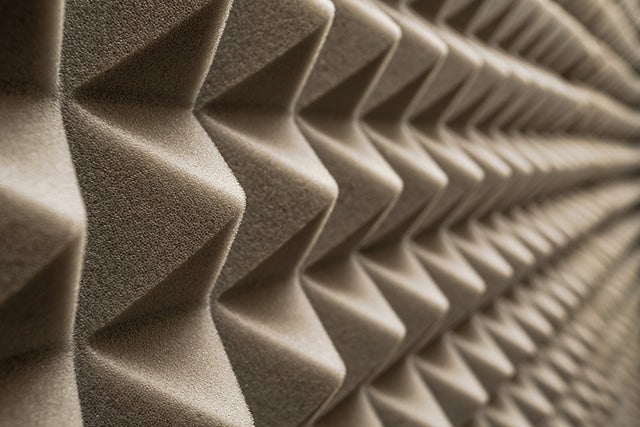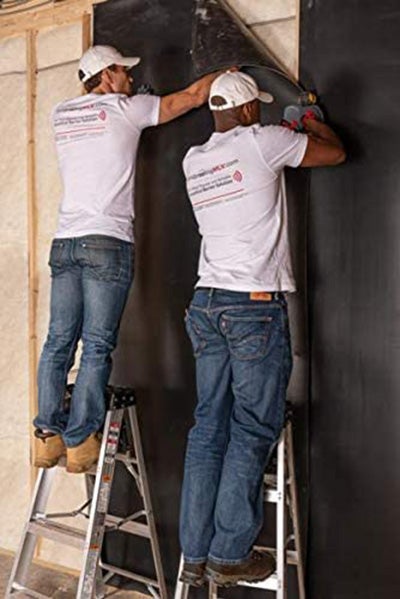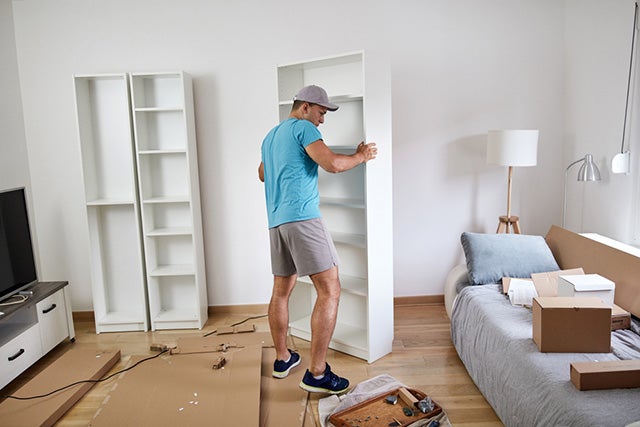Your bedroom is the last thing you see at night and the first thing you wake up to. It should be as peaceful as possible to keep you relaxed and well-rested. But this isn’t always the case, especially if there’s a lot of noise outside.
It’s a good thing you can soundproof your room! Soundproofing is a method that helps you control and isolate sound from an undesired noise.
We share with you a comprehensive guide to soundproofing your bedroom, including the materials you will need and the steps to take! You’ll also find out the benefits of soundproofing your bedroom.
Why Soundproof a Bedroom?
Soundproofing is a technique for suppressing, absorbing, and diffusing noise from a certain area. This is typically done through double-glazed windows or insulation.
Doing this to your bedroom helps provide privacy and maximum relaxation as the loud noises are reduced. But how important is it to soundproof your bedroom?
Here are some good reasons to soundproof your bedroom.
— Privacy
You’ve probably experienced being uncomfortable with your neighbors’ private conversations before. And we’re certain you don’t want them to hear what you’re talking about as well!
Soundproofing your bedroom avoids voice leaks and prevents distractions such as music, loud laughter, and computer game sounds. It allows you to carry out your activities in the room without disturbing others who may be sleeping.
— Prevents Health Issues
Soundproofing your room aids in the prevention of potential hearing loss and other health issues.
It hinders your exposure to unwanted sound levels of fireworks and loud music that can cause hearing impairment.
Sound also affects other areas of the human body, including the heart. Loud noises are linked with stroke and high blood pressure.
— Comfort
Soundproofing your bedroom undoubtedly keeps you relaxed and comfortable at home, giving everyone in the house a good night’s sleep without the high noise levels.
Even if you like to watch television while the kids are asleep in the next room, they won’t be interrupted thanks to the noise levels that are reduced to the bare minimum.
— Regulations and Policy
There are usually no strict rules and regulations in terms of noise pollution. But neighbors can file a complaint about loud noises, especially at night!
This offers a good reason for you to soundproof your bedroom, or the whole house to avoid getting in trouble and falling on the wrong side of the law.
Different Ways You Can Soundproof a Bedroom
There is an extensive list of methods to soundproof your bedroom. Each of them has its best use scenarios.
From basic DIY projects to advanced techniques, here are different ways you can soundproof your bedroom!
• Traditional Soundproofing
The traditional methods for soundproofing a room include staggered stud walls and double walls. The former simply refers to the connection of two drywall slabs with studs. Staggered stud walls are effective but expensive and space-consuming.
Meanwhile, you can think of double walls as simply a room within your room. It’s ideal for music studios for complete sound protection. Like staggered stud walls, they take up a lot of space and may cost an arm and leg.
• Adding Mass
Putting high-density materials in your room, specifically your wall, is the most common technique in minimizing sound transfer. This cheap method usually involves non-porous materials that are heavy yet flexible enough to hinder sound energy from spreading.
The materials for this method are usually nailed to studs and stuck to your drywall. Sometimes, furring strips are first attached before the actual material.
• Sound Isolation Systems
The most effective soundproofing method is the application of sound application systems. This method requires a professional to “float” a mounted wall over the studs to stop sound waves from transferring to another room.
What makes this technique special is that they are fastened without direct contact between the wood and hardware. It simply pads the studs through a peel and stick dampener while the metal tracks are being applied.
Sound isolation systems are also made of neoprene foam to prevent vibration and increase the strength of your bedroom walls.
• DIY Methods
You can also soundproof your bedroom on your own through a few tweaks. The easiest way you can prevent sound from spreading in and out of your bedroom is by rearranging your furniture. All you have to do is move bulky closets and shelves against the thin shared wall. So if the kids’ room is to your right, your wardrobe should also be in the same position.
This easy way to add mass to your walls can also prevent echoes in the room. Familiarize yourself with the textures in your room. For example, a couch with a soft fabric can absorb more sound than a leather sofa.
You may also consider adding area rugs and carpets on the floor to avoid loud footsteps. You can also use floor mats as carpet underlays. These are beneficial if you have small children who tend to trip over their feet.
When choosing materials for your rug and carpet, make sure they are thick enough to solve the noisy situation.
How to Soundproof a Bedroom
Now that you know the different methods for soundproofing a bedroom, it’s time to start with the project!
Here’s everything you will need:
- Tubular silicone weatherstripping
- Spline roller
- Ceiling cloud
- Mass-loaded vinyl
- Scissors
- Drywall nails
- Hammer
1. Seal Your Bedroom Door Gap
Sound can travel even through the smallest gaps and spaces in your bedroom. You can seal your bedroom door gap through a weather seal system that requires tubular silicone weatherstripping.
Simply push the barbed tongue of the weatherstripping into the door’s end slot without stretching it. Then, cut the strips with scissors and drive the object into its spline using a spline roller.
If this is too complicated for you, you can try switching to a new bedroom door altogether. Choose one that is heavy-duty and leaves no gap under to block out the unwanted noise.
2. Insert Ceiling Clouds
If you have a large bedroom or a loft apartment, ceiling clouds are a great way to reduce the reflected sound. This acoustical foam is placed on your room’s ceiling to quell additional noises in the room.
This is a luxurious option for serious soundproofers as they come in various design trends. Acoustic clouds also absorb sounds at two points. It starts bouncing up the ceiling and down to the floor to dampen noise.
3. Add Panels to Your Wall
Mass-loaded vinyl or MLVs can stop sound waves from being transferred outside the bedroom. This material is available in rolls.
Prior to applying mass-loaded vinyl, make sure you know the measurement of your walls. Don’t leave any gaps to ensure complete eradication of noise.
Put the MLV against the wall from one side until the other corner, starting from the ceiling all the way down. Drywall nails and a hammer will be needed to attach the vinyl. You may overlap it for a more optimal sound barrier.
Once you’ve covered the entire wall, put a layer of drywall to make it twice as effective! This will serve as the wall to be painted and decorated however you like.
4. Rearrange Your Room
Once you’re done sound-proofing your entire room, it’s time to rearrange your furniture as told. This is the easiest way to reduce the sound and it won’t cost you any money!
As mentioned, place thick furniture on thinly shared walls. You may also try moving your bookcase or dresser to outside-facing walls.
In Conclusion
Soundproofing helps you cut down on the noise that’s entering and exiting your bedroom. It offers privacy for your private conversations and comfort from the outside hubbub.
Call a professional to soundproof your bedroom or do it yourself by inserting the panels and rearranging your furniture.
We hope you find this article helpful. Tell us about your experiences with soundproofing your bedroom in the comment section! And be sure to read our other helpful guides like everything you should know about blackout curtains.
Photo credit: Damir Khabirov/Shutterstock; Day Of Victory Studio/Shutterstock;
TommyStockProject/Shutterstock; HQuality/Shutterstock;
yamasan0708/Shutterstock; yamasan0708/Shutterstock;
Lost_in_the_Midwest/Shutterstock; Mehmet Cetin/Shutterstock;
Bilanol/Shutterstock; CGN089/Shutterstock; urfin/Shutterstock;
Robert Bodnar T/Shutterstock; AstroStar/Shutterstock


